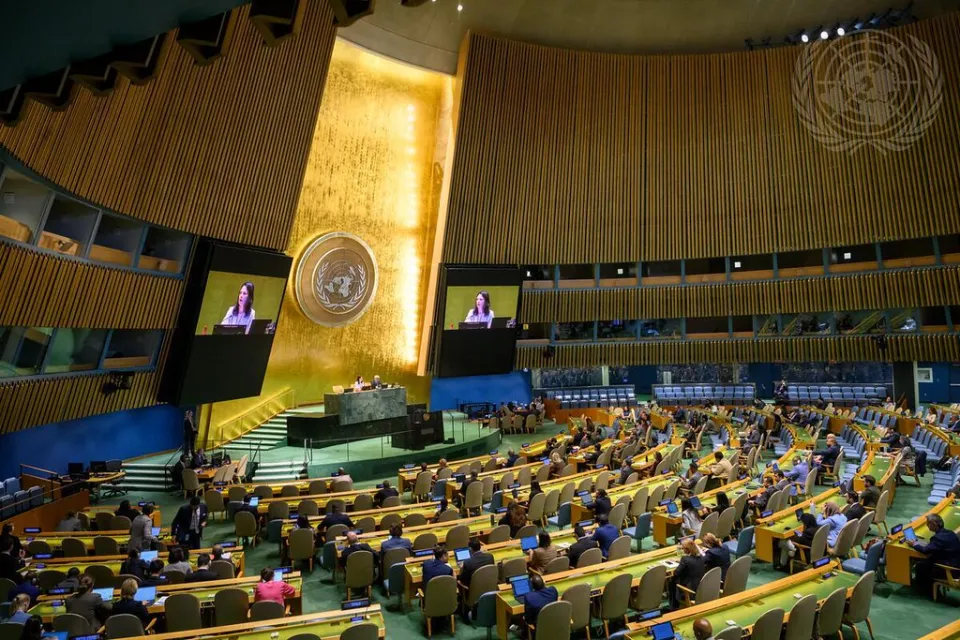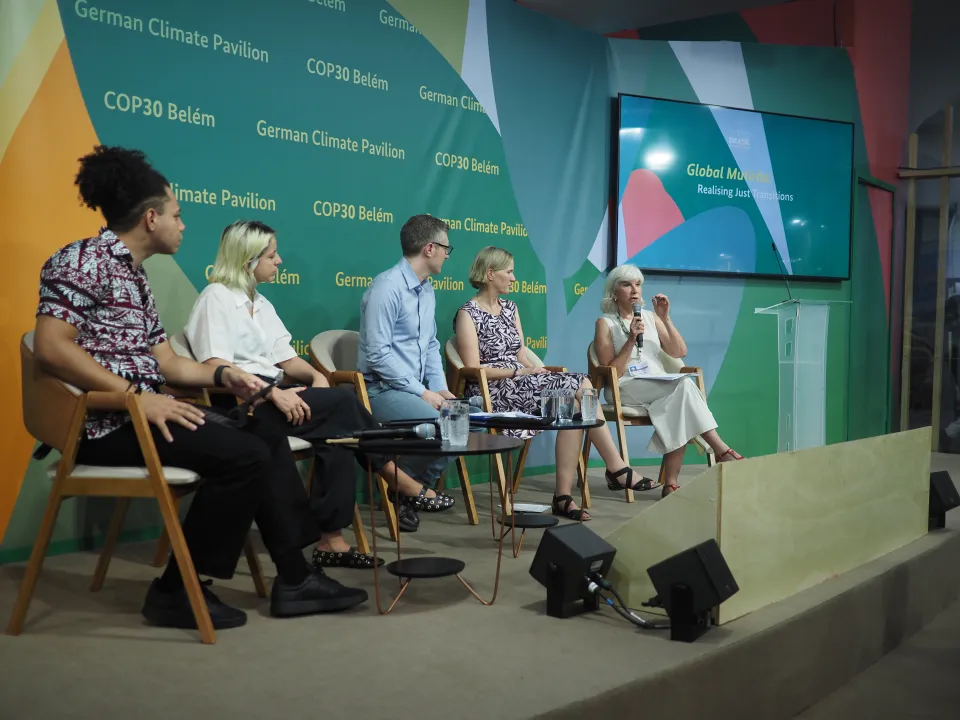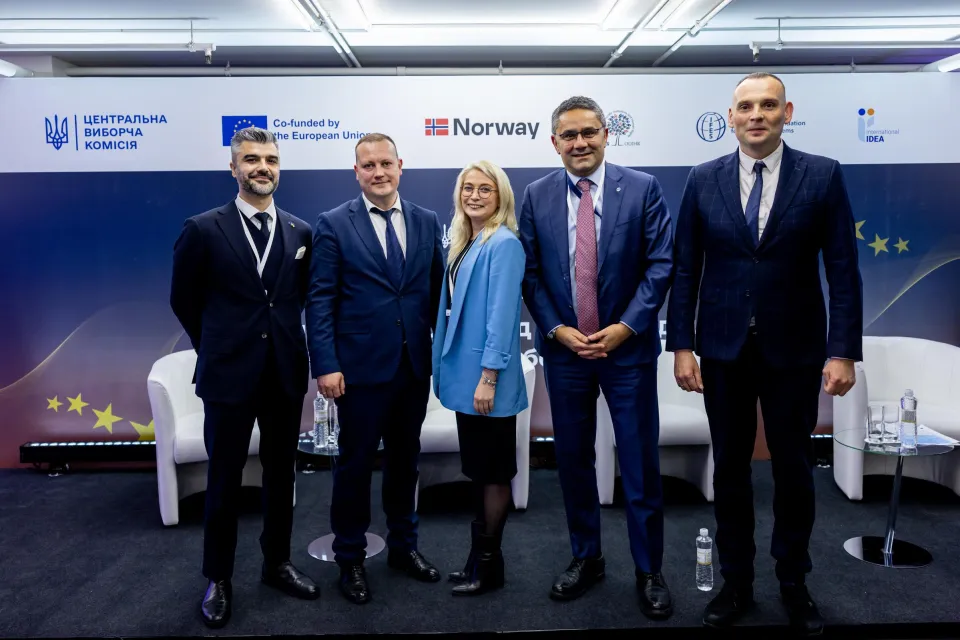The final results of the elections which culminated in the second round re-election of Dilma Rousseff of the Workers’ Party (PT) as president of Brazil, illustrates the most striking feature of the 2014 electoral cycle: These were the most competitive presidential elections in the democratic era. The difference between Rousseff and her opponent, Aécio Neves, of the Brazilian Social Democratic Party (PSDB), was just more than 3 per cent: 51.64 per cent and 48.36 per cent respectively. This represents an unprecedentedly narrow majority of just three and a half million votes from a total of 113 million people who voted and 105.5 million valid votes (excluding blank and spoiled ballots).2 In a country where voting is compulsory, the abstention rate of 21 per cent is unsurprising, since it corresponds to the trend noted in the second round of previous presidential elections.3 Nevertheless, this rate acquired a greater significance in an electoral scenario which had been unpredictable since the first round, which saw a new pattern of electoral competition in the battle for the federal government. For the first time since 2002, the presidential elections took on a plebiscitary nature in an economic and political context which presented the real possibility of a changeover of power.
Against this backdrop we should note some of the features of the electoral scenario which emerged in the second round. First, Rousseff’s victory ensures a total of 16 years of a PT government—clearing the way for the candidacy of former President Luiz Inácio Lula da Silva in 2018. This proposal was already floated in the week following the elections. Second, the repeat of the polarised battle between the PT and the PSDB at the federal level reaffirms the defining characteristic of electoral competition in Brazil. Hence, in spite of a third alternative in the first round in the form of Marina Silva of the Socialist Party, the gravitational pull of the PSDB prevailed at the 11th hour. Third, in substantive terms, starting in the first round, the fight between the incumbent candidate and that of the opposition focused predominantly on economic concerns, the quality of spending (and the institutions) and not on the potential for redistribution presented by social policies.
How can these results be explained? Below we examine the race for the Presidency and then the composition of Congress and the political and economic challenges facing the government.
The characteristics of a plebiscitary election
Although the numbers show the plebiscitary nature of the presidential election, the distribution pattern of votes between both candidates do not support the reductionist interpretations published in some of the domestic and international media.
Two of these interpretations are noteworthy in that they reiterate electoral rhetoric and they fail to make a comprehensive analysis of the data. They also fail to consider how ongoing social and economic transformations in the country in recent years have contributed to changes in the electoral landscape.
Elections: Profile of the Electorate 2010 and 2014
| Elections in 2010 – 2nd round | ||
|---|---|---|
| Total | Percentage of Registered Votes | |
| Total Voters | 135,604,041 | |
| Registered Votes | 106,605,908 | |
| Valid Votes | 99,463,645 | 93.3% |
| Blank | 2,452,594 | 2.3% |
| Spoiled | 4,689,397 | 4.4% |
| Abstentions | 29,196,864 | 21.5% |
| Elections in 2014 – 2nd round | ||
|---|---|---|
| Total | Percentage of Registered Votes | |
| Total Voters | 142,821,358 | |
| Registered Votes | 112,683,879 | |
| Valid Votes | 105,542,273 | 93.7% |
| Blank | 1,921,819 | 1.7% |
| Spoiled | 5,219,787 | 4.6% |
| Abstentions | 30,137,479 | 21.1% |
Source: Superior Electoral Court. Fonte: TSE. Elaboração: G1.
One of the reductionist interpretations is that voting in Brazil was split along the lines of rich and poor. According to this interpretation, the rich voted for the PSDB, a centrist party whose programme and historical credentials identify it as pro-business. Meanwhile the poor, aligned with the centre-left PT, voted for continuity. The same binary logic is also applied to the regional/geographic distribution of the electorate. Hence the supposed polarisation between the South/Southeast, on one hand, and the North/Northeast on the other, can be noted in the claim that ‘the Northeast elected Rouseff,’ as this region was the main beneficiary of federal government income transfer programmes, including the Bolsa Famíliaprogramme. Other interpretations of the electoral behaviour of Brazil also warrant further analysis. The levels of abstention, similar to those seen in previous elections (between 20-21 per cent) are interpreted as political apathy and scepticism in relation to politicians and possibly the democratic institutions. These interpretations have in turn given rise to the suggestion that the victory of Rousseff—whose party is faced with a new wave of corruption scandals centred on Petrobrás—is evidence of voters’ tolerance for criminal behaviour. In other words, there has been a feel-good factor associated with the following phenomena: the low level of unemployment (4.5 per cent), income transfer programmes, and in particular the emergence of the new middle class.
In order to examine these interpretations in light of the political forces in play, it is essential to consider how the elements of continuity and change were recombined in this electoral cycle.
Between Continuity and Change
As an initial consideration, the distribution of votes between the second round candidates provides some grounds for an interpretation that the country is polarised between rich and poor, North/Northeast and South/Southeast, developed regions and underdeveloped regions. It is true that Rouseff obtained a majority of 72 per cent, equivalent to 20 million votes, in the states of the Northeast, one of the least developed regions of the country. She also secured significant majorities among voters with lower levels of income and education. Furthermore, since the first round there was a clear correlation between the distribution of income transfer programmes and of pro-PT votes, as shown by the maps in Figure 1. There is therefore clearly some truth in these interpretations, since they confirm the difference in the pattern of votes for her opponent, Aécio Neves. He performed best in the most developed regions such as São Paulo (65 per cent), his share of the vote also increased in line with higher levels of income and education. In addition, in terms of the size of municipalities, the PT candidate obtained a 65 per cent majority of smaller municipalities, namely those with fewer than 140,000 inhabitants, while Neves won in a majority of municipalities with a population of more than 200,000 inhabitants.
Figure 1: Voting Compared with Bolsa Família

Distribution of votes among presidential candidates by municipality
Proportion of families receiving funds from Bolsa Família by municipality.
Note: The darker the colour, the greater the proportion of families who received government assistance.
There are many reasons to question the simplistic nature of these interpretations. First, the suggestion that the 48.4 per cent of voters who supported the opposition were made up of rich, educated people with higher incomes should be disregarded as electoral rhetoric. In the first round the total number of votes cast for the opposition candidates Marina Silva, former environment minister in the Lula government, representing the Socialist Party, and Neves of PSDB, exceeded those obtained by Rousseff. This confirmed what opinion polls have been showing since 2013, following the demonstrations in June: 70 per cent of the population said they were in favour of change—but voters found it hard to identify the alternative candidate in which to invest these expectations.
Based on the distribution of votes across the regions, the claim of rich states versus poor states is also unfounded. Partly because it fails to recognise the strong performance of Rousseff and the PT—in all five regions of the country—which never polled below 40 per cent. Her performance in the South, further attests to this, where the PT obtained the lowest percentage of valid votes Furthermore, of the 10 states where Rousseff and the PT received the lowest number of votes, only three were in the South and the Southeast: Santa Catarina, Paraná and São Paulo. The other seven were divided between the North and the Centre West.
However, it is the distribution by municipality which shows the greatest change in the historical pattern of votes for the PT, and which requires explanation. The party’s influence in smaller municipalities strengthens a trend already seen in the presidential elections of 2010.
Elections: Profile of the Electorate 2010 and 2014
| Elections in 2010 – 2nd Round | |||
|---|---|---|---|
| José Serra | Dilma Rousseff | Percentage of Electorate | |
| North | 2,541,541 | 3,712,617 | 7.4% |
| Northeast | 7,740,340 | 18,448,892 | 27.1% |
| Southeast | 20,083,853 | 21,935,065 | 43.5% |
| South | 8,295,107 | 7,357,617 | 14.9% |
| Centre-West | 3,413,254 | 3,349,246 | 7.2% |
| Elections in 2014 – 2nd Round | |||
|---|---|---|---|
| Aécio Neves | Dilma Rousseff | Percentage of Electorate | |
| North | 3,376,148 | 4,393,301 | 7.6% |
| Northeast | 7,967,846 | 20,176,579 | 26.8% |
| Southeast | 25,470,265 | 19,867,894 | 43.4% |
| South | 9,686,559 | 6,759,908 | 14.8% |
| Centre-West | 4,388,594 | 3,254,304 | 7.2% |
Source: Superior Electoral Court. Fonte: TSE. Eöaboração: G1.
The PT ceased to be the urban party par excellence, whose performance in major cities and capitals contrasted with the clientelistic “right-wing” parties, especially in municipalities with between 30,000 and 50,000 inhabitants. 4 The explanation is simple: in regions where dependence on the State is highest, voters mostly tend to support the government, regardless of which party is in power.5 One of the clearest examples of this transformation is that in the first round the PT was defeated in the cities of the industrial region of São Paulo (known as the ABC), in particular São Bernardo do Campo, the birthplace of the trade union movement from which the PT emerged.
Figure 2: 2014 Elections 2nd Round: Victory of Presidential Candidates by Federal Unit (FU) (Elections in 2010 – 2nd Round: votes won by the candidates broken down by state)

Finally, the view that abstention rates are indicative of political apathy requires further consideration since it ascribes a greater political importance to these rates than they actually have. The historical average of 20 per cent has much more to do with failings in voter registrations than with any political disillusionment. The best evidence of this distortion is in municipalities where voters have been relisted using biometric data, abstentions have been reduced on average by 61 per cent.
How can we then explain the division of the country between the two candidates, the plebiscitary nature of the presidential elections and finally the victory of Rousseff? How can we explain voters’ supposed tolerance of corruption, in spite of evidence to the contrary as witnessed in the mass protests of June 2013?
A suitable starting point when discussing these questions is to consider the reasons why, for the first time since 2002, conditions emerged that favoured an effective change of power. Firstly, expectations of change gained new impetus as a result of the protests of 2013. They provided a national platform for the new agenda of the emerging middle classes, based on criticism of the standard of services and government spending. Owing to the scale, the non-partisan nature and the content of the demonstrations, they represented a turning point in a very specific sense: They dissolved the dominant belief up until that point that the PT held a monopoly on the popular representation. Secondly, as a consequence, they opened the way for a new element in electoral competition: they liberated the sectors which arose out of democratic movements, and in particular the opposition parties, like the PSDB, to act in opposition.
In this context it also becomes easier to understand left-wing movements which broke with the PT in search of a third way, under the leadership of two former ministers from the Lula government: Eduardo Campos, governor of Pernambuco State, of the Socialist Party; and Marina Silva, leader of the environmental movement and former environment minister under Lula.
A third series of factors which favoured a change of power relates to the performance of the economy under the Rousseff government. On one hand, the Brazilian economy was entering a technical recession, while inflation was already above the ceiling of the target (6.5 per cent), even considering price controls, especially on energy and transport. On the other hand Rousseff shifted to the left in terms of economic policy, radicalising a movement that had already begun in the second term of President Lula. In other words, she adopted an ad hoc Keynesianism, implemented through public spending and the expansion of credit by state banks, based on a concept of interventionism with a strong protectionist bent. This led to a deterioration in public and external accounts. Finally, the electoral race unfolded against a backdrop of police investigations, which brought to light the unprecedented scale of corruption at Petrobrás. This involved the collusion between senior company officials appointed by the PT and allied parties, large private sector suppliers of the state oil company and elected politicians.
While those factors help understanding the plebiscitary nature of the presidential elections, they are not sufficient to explain the terms in which the actual electoral competition unfolded. A political analysis of this process requires an examination of at least two of the distinctive characteristics of this campaign. Firstly, the more intensive use of the resources of power by the candidate for re-election. This resulted in further exacerbating the imbalance inherent in the current electoral rules.
Secondly, the strategy of communications and electoral marketing used in constructing narratives about the official candidate and her opponents.
It is well established that incumbents standing for election have greater resources of power at their disposal than their opponents, but the use of these resources was intensified by the Rousseff government in a number of ways. This took two forms: the suppression of scheduled announcements of statistics by official institutions in the run-up to the elections whenever they reflected negatively on the government, and the intensive use of electoral rules which made the competition extremely unbalanced in the first round. Access to free television and radio advertising time during the 40 day campaign period was distributed as follows: Rousseff had 45 per cent of the total 23 minutes of adverts, Neves had 18.33 per cent and Silva had 8.2 per cent.6 This distribution is determined by the extent of the congressional representation of the respective parties, and based on the total number of deputies from the PT and allied parties. It therefore constitutes an essential element in establishing party coalitions, taking precedence over political affinities. (In the second round, advertising time is divided equally).
This imbalance, in turn, was amplified throughout the first round by the tenor of PT communications, and in the second round it was reinforced by the rhetoric of former President Lula. It was marked by a break with the rhetoric of hope and the positive agenda which had characterised previous campaigns. In 2002, Lula’s “Peace and Love” campaign was based on the rhetoric that “hope will overcome fear,” while the 2010 campaign portrayed Rousseff as an effective manager. In 2014, against a backdrop of economic recession and the scale of corruption at Petrobrás, the prevailing narratives were intended to bring about the moral and political deconstruction of opponents using the spectre of a rolling back of the social and economic advances achieved over the years, and by highlighting class differences. The PT campaign mainly targeted beneficiaries of funds from the Bolsa Família programme and the emerging middle classes.
Our hypothesis is that in view of these distortions, which deliberately sought to incite fear to stifle hopes of upward social mobility, the “new middle classes,” still under consolidation, were practically split down the middle, based on the fear of losing ground over the coming four years.
The Conditions of Governability: Congress and the Economic Challenges Ahead
In light of the current situation, namely a narrow majority, economic recession, high inflation and a reinvigorated (and resentful) opposition, the outlook for the Rousseff government depends on two important conditions. First, Rousseff needs to convert the electoral coalition into a government coalition. This will require forming majorities in Congress and securing the support of a core unit of governors. The second condition is the economic agenda through which it will seek to address the economic challenges facing the country.
Although PT still controls the highest number of seats in Congress, with 70 deputies, the PT’s representation has been diminished in two ways: in symbolic terms, because it lost dramatically in its state of origin, São Paulo, and in numeric terms because it lost 18 deputies from the Chamber. In the Senate its share has remained the same size. Two aspects have contributed to an uncertainty about whether PT will manage to convert its broad electoral coalition into a government coalition. On the one hand the 2014 campaign revealed greater distrust between the PT and its main ally, the PMDB. The PMDB is calling for greater representation in terms of ministries and the presidency of one of the houses of Congress following the decline of five deputies within their caucus.
The most idiosyncratic aspect of Congress to emerge from the first round is its fragmentation, which poses great difficulties for the formation of majorities. No fewer than 28 parties will be represented in the lower house in 2015, a situation without parallel in other countries (compared with the already fragmented composition at present of 22 parties). This comes at a time when the executive’s power to propose initiatives and strike bargains is in decline.
On the other hand, the opposition to emerge in the new political landscape will be stronger than in recent years. The PSDB has expanded its ranks in the Chamber of Deputies, and despite its loss of two senators it succeeded in electing its most combative candidates. Neves won in 12 states and in the Federal District. While the alliance supporting Rousseff won in 15 states, it suffered considerable losses, namely the Federal District, São Paulo, Amazonas and Santa Catarina. This uncertain context is aggravated by the sword of Damocles hanging over the PT and the allied parties in the form of witness statements from those involved in the police operation which led the federal police (and the Public Prosecutors’ Office) to uncover the network of hidden interests centred on Petrobrás.
Composition of the Senate Before and After the Elections
Senate: Party Names
- PMDB (Partido do Movimento Democrático Brasileiro)
- PT (Partido dos Trabalhadores)
- PSDB (Partido da Social Democracia Brasileira)
- PTB (Partido Trabalhista Brasileiro)
- PDT (Partido Democrático Trabalhista)
- PP (Partido Progressista)
- PSB (Partido Socialista Brasileiro)
- DEM (Democratas)
- PR (Partido da República)
- PC do B (Partido Comunista do Brasil)
- PSD (Partido Social Democrático)
- Outros

Source: TSE; Elaboration: International IDEA, Latin America and the Caribbean Programme

Source: TSE; Elaboration: International IDEA, Latin America and the Caribbean Programme
Composition of the Chamber of Deputies Before and After the Elections
Congress: Party Names
- PT (Partido dos Trabalhadores)
- PMDB (Partido do Movimento Democrático Brasileiro)
- PSD (Partido Social Democrático)
- PSDB (Partido da Social Democracia Brasileira)
- PP (Partido Progressista)
- PR (Partido da República)
- DEM (Democratas)
- PSB (Partido Socialista Brasileiro)
- SDD (Partido da Solidariedade)
- PROS (Partido Republicano da Ordem Social)
- PDT (Partido Democrático Trabalhista)
- PTB (Partido Trabalhista Brasileiro)
- PC do B (Partido Comunista do Brasil)
- PSC (Partido Social Cristão)
- Outros

Source: TSE; Elaboration: International IDEA, Latin America and the Caribbean Programme

Source: TSE; Elaboration: International IDEA, Latin America and the Caribbean Programme
In this context, the main uncertainty is the economic agenda through which the president will have to address the economic challenges facing the country and her own legacy. First, there is greater inflationary pressure than in previous years, above the central target of 4.5 per cent.
Second, the reduction in growth prospects -0.1 per cent this year and an average of 1.6 per cent per year in the past four years. This is the third worst performance in the history of the Republic; well below the international average (3.5 per cent) and average growth in Latin America (3.8 per cent) in the past four years. The fiscal situation has gone from a primary surplus of 3 per cent of GDP in 2011 to zero or negative this year, when discounting sleight of hand in reporting revenue and expenditure. The nominal deficit has also been deteriorating and has already reached 4 per cent of GDP, combined with a growth in public debt of seven percentage points of GDP and the dramatic reduction in the trade balance, which has been close to zero in the past two years. There also is an ongoing microeconomic strategy, involving recovering the capacity for growth by national industry through incentives focused on an agenda of competitiveness, not of protectionism. Similarly there is a pressing need for a solution to problems facing the energy sector, including electricity, oil and ethanol. Rousseff government’s policy of forced reductions in energy prices disrupted the sector, and together with unfavourable climatic conditions, resulted in significant increases in costs for the private sector as well as increases in public sector spending as a result of its policy of subsidies.
In closing, there is an urgent need to recover economic credibility in the eyes of investors, which will require a new cycle of economic restructuring, including the adoption of reforms to indicate a commitment to sustainable growth with fiscal balance, an increase in economic productivity and a search for new forms of inclusion in the international system.
References
1 Respectively, Lecturer and Researcher at the University of São Paulo and Director of the Mendonça de Barros Associados Consultancy.
2 Total blank and spoiled came to 7.140 million.
3 In absolute terms, 30.137 million from a universe of 142.822 million voters.
4 Based on data from the Superior Electoral Court, Aécio Neves won in 50.8 per cent of municipalities with over 140,000 voters (64 of a total of 126). This number of voters represents almost 70 per cent of the municipal population. Rousseff, in turn, won in over 60 per cent of municipalities with a population of fewer than 75,000 inhabitants.
5 This fact, which in the past was used to justify criticisms by democratic sectors of the clientelism of the dominant party the Arena during the dictatorship - has been described as “qualunquismo” by Marcus Melo, based on the “governism” noted in the South of Italy.
6 Respectively: 11 minutes and 24 seconds; 4 minutes and 35 seconds; 2 minutes.




